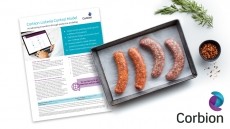Red meat may increase diabetics heart disease risk, suggests study
risk of coronary heart disease amongst diabetics by 50 per cent,
says new research from Harvard.
The researchers behind the study note, however, that the results do not prove that increased heme iron consumption from red meat is the actual cause of the apparent increase in CHD risk.
The research looked at the effects of red meat and dietary iron intake on the incidence of coronary heart disease (CHD) among the 6,161 women with diagnosed type-2 diabetes enrolled in the Nurses Health Study.
"The major importance of this finding is that, high consumption of heme iron and red meat may be a more dangerous cardiovascular risk factor for diabetic patients compared with the general population," lead author Lu Qi told FoodNavigator.com.
An estimated 19 million people are affected by diabetes in the EU 25, equal to four per cent of the total population. This figure is projected to increase to 26 million by 2030.
In the US, there are over 20 million people with diabetes, equal to seven per cent of the population. The total costs are thought to be as much as $132 bn, with $92 bn being direct costs from medication, according to 2002 American Diabetes Association figures.
Diabetics are already at an increased risk of subsequent CHD, explained the researchers, but the new study, published in the journal Diabetes Care, reports that this risk may be increased further with high intakes of red meat and heme iron.
Dietary iron intake is either heme iron, from red meat, poultry, and seafood, or non-heme that can be found in both animal and plant foods. The former is more bioavailable.
The researchers used data from semi-quantitative food frequency questionnaires to assess dietary intakes. During the follow-up time, from 1980 to 2000, 550 cases of CHD were documented, including 259 non-fatal heart attacks, 153 CHD deaths, and 138 bypass operations.
After adjusting the results for confounding factors such as age and BMI, the researchers report that high intake of heme iron from red meat, poultry and seafood was associated with a significantly increased risk of CHD for these diabetic women.
"Women with the highest intake of heme iron had 50 per cent increased risk of total CHD compared with those with the lowest," they wrote.
The researchers stressed however that it remains to be proved if increased iron intake is actually the cause of the increased risk in CHD amongst these diabetic women. Indeed, women who consumed high levels of red meat and heme iron were found to consume less fibre and vitamin C, while saturated fat levels were also high.
"We could not completely exclude the possibilities of residual confounding because of imperfect measures of diet and lifestyle factors," wrote the researchers. "For example, heme iron and saturated fat are measured with errors in the dietary questionnaire; residual confounding by saturated fat is unavoidable even after careful adjustment."
"Randomized, placebo-controlled clinical trials will give the final answer for the question we tested but are difficult to be conducted," Qi told this website. "We expect more prospective studies in diabetic patients to replicate the findings. Also, evidence from experimental settings will give useful support."
Source: Diabetes Care January 2007, Volume 30, Number 1, Pages 101-106 "Heme iron from diet as a risk factor for coronary heart disease in women with type-2 diabetes" Authors: L. Qi, K. Rexrode, R.M. van Dam, F.B. Hu



















